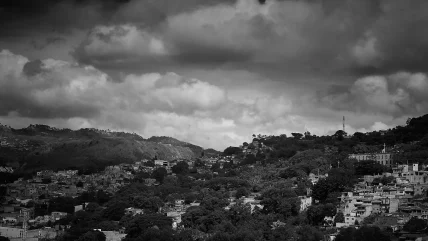
Walking around the Honduran capital of Tegucigalpa – sometimes abbreviated to Tegus – feels like stepping back into the days of the old west.
Everyone working security – from guards and bouncers to valets – is carrying at least a revolver, if not a shotgun or some sort of rifle. Even in the city’s embassy district, the streets are a warren of razor wire and electric fences.
Across Honduras, endless crime, committed with impunity, has led to an estimated total of 100,000 private security guards. This is a far higher number than the forces of the national police (14,000) and army (12,000) combined.
Given the crime level, it is wise for strangers to the city to be more conscious of their safety than they would in other cities – such as Colombia’s Medellín – that have started to shrug off former reputations for being dangerous. Foreigners are encouraged to stick to the embassy district, and to travel by taxi.
Tegucigalpa is part of Honduras’ Distrito Central, an urban area that ranks as the sixth most dangerous in the world. The city has a population of roughly 850,000, and a murder rate of more than 73 per 100,000 residents each year. In other words, around 620 people are murdered every year in the city.
The city is built on hills, where shootouts between gangs only lend further to the sense of walking through a lawless dustbowl. Despite sitting in steamy Central America, the streets of Tegucigalpa are hot, dry and dusty, thronged by decaying American cars and school buses.
The crime that terrorises the city is largely fuelled by gangs – such as The Mara Salvatrucha, or MS13 – that fight in the city’s streets for dominance over drug and human trafficking. Extortion is a big business, too.
As of 25 August 25 this year, 30 buses had been torched across the country – often with the drivers inside – with the most recent attack taking place in Tegucigalpa. The attacks are brutal retribution against poor bus drivers who are being extorted for so-called “war taxes” by rival gangs that are battling for control.
Crime in Tegucigalpa – as well as other cities right across Central America – is feeding a refugee crisis of harrowing proportions. According to US customs and border protection, tens of thousands of children and their families fled north from the terrifying triumvirate of Honduras, El Salvador and Guatemala.
People in Tegucigalpa say that the freedom to move easily around the city has got worse since the US backed coup of 2009, an incident that saw democratically elected president Manuel Zelaya ousted from public office. Support is needed to help build Tegucigalpa into a city – and home – that is safe for its residents.
It is never a good feeling to speak ill of someone’s home, and Tegucigalpa also has a fair share of cultural hotspots worth visiting: churches, museums, galleries. But this city needs help.






